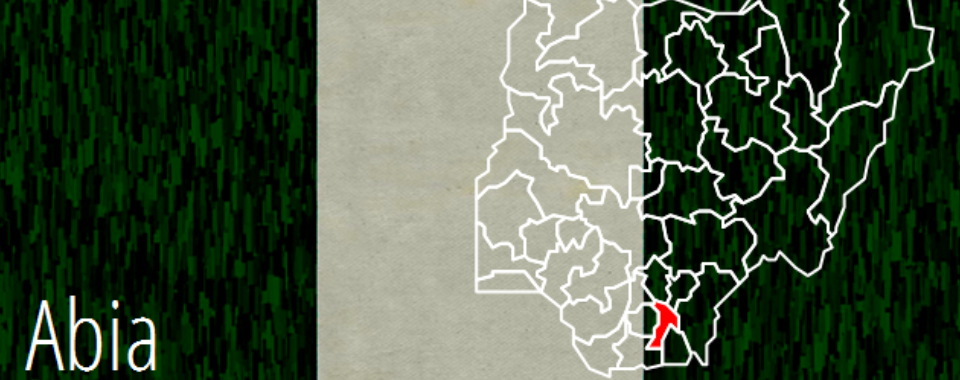BY NATE HAKEN AND PATRICIA TAFT*
Abia State has an estimated population of 2.4 million, predominantly of Igbo origin. Comparatively, it has not experienced the levels of violence and insecurity that other states in the Niger Delta have over the time period analyzed. Abia produces about 27% of Nigeria’s crude oil and a significant amount of its natural gas. It is also rich in yam, maize, rice, potatoes, and cashews.
Theodore Orji (People’s Democratic Party) was re-elected as governor of Abia state in 2011. In the 2015 election re-run, held in April 2015, PDP’s Okezie Ikpeazu succeeded Orji as governor. Since the dissolution of the local government administrations in January 2010, there have been no Local Government Area (LGA) level elections; the LGAs are administered by a council of Transitional Chairmen. From 2012 to 2013, issues reported included kidnapping, political intimidation, student protests and cult violence. In the first half of 2014, Aba North/South LGA worsened while Umuahia North/South LGA improved by a significant margin. Additionally, throughout 2014, shootings, killings, and abductions continued to be reported.
This Conflict Bulletin provides a brief snapshot of the trends and patterns of conflict risk factors at the State and LGA levels, drawing on the data available on the P4P Digital Platform for Multi-Stakeholder Engagement (www.p4p-nigerdelta.org). It represents a compilation of the data from sources listed below, not necessarily opinions of FFP or any other organization that collaborated on the production of this bulletin. The summaries draw on data collected by ACLED, FFP’s UNLocK, the Council on Foreign Relations’ NST, WANEP Nigeria, CSS/ETH Zurich, NEEWS/TMG, and Nigeria Watch integrated on the P4P platform. They also draw on data and information from “Violence in Nigeria: Patterns and Trends,” by Patricia Taft and Nate Haken (Springer Press, April 2015).
*Hannah Blyth and Ania Skinner also contributed to this report.
